Make and model: Vauxhall Combo Electric Pro 50kWh
Description: Small delivery van, electric
Price: From £35,509 + VAT (plus options)
Vauxhall says: “Technologically advanced, spacious and practical, the new Vauxhall Combo is a convincing choice for professionals in the market for a capable compact van.”
We say: The Combo is probably the most convincing van in the Vauxhall family (and the same goes for the other Stellantis brands) and the electric model is lovely if it meets your business needs.
- Introduction
- Who is this van aimed at?
- Who won’t like it?
- What do you get for your money?
- What can you get in it?
- What’s the Vauxhall Combo Electric like inside?
- What’s under the bonnet?
- What’s the Vauxhall Combo Electric like to drive?
- Charging the Vauxhall Combo Electric
- Verdict
- Similar vans
- Key specifications
- Buy a Vauxhall Combo Electric
- Lease a Vauxhall Combo Electric
Introduction
This is the Vauxhall Combo, a small van from the Stellantis family that’s available with either a diesel engine or (as shown here) an electric motor. This generation was launched in 2019 and was updated in 2023.
The Combo is almost exactly the same van as the Peugeot Partner, Citroën Berlingo and Fiat Doblò – all from Stellantis – and the Toyota Proace City, which uses Stellantis vans for its range in Europe (but not other parts of the world). All versions of the van are identical apart from badges, some light cosmetic differences around the front bumper and grille, and some minor specification variations.
It’s worth pointing out that the electric version of the Combo is built here in the UK, at Ellesmere Port. The diesel version is built in Portugal.
Who is this van aimed at?
Small van sales in the UK grew by 13% in 2024, although they still make up a small part of the overall van market compared to mid-size and large vans. But electric small vans currently remain in a minority, despite the government mandate that is designed to help accelerate their adoption.
Electric vans are ideally suited to operators who usually work in a relatively small local area – Royal Mail delivery vans, for example – and can charge at a central base. Preferably an urban or suburban area, as EVs work best in stop-start environments. For last-mile deliveries and those where load volume is more important than maximum payload, electric vans can work very well.
For best use of a van like this one, you’ll need to have your own charging point available at the vehicle’s base of operations for maximum convenience and minimum charging costs. If you’re relying on public charging, it’s not going to be as viable a prospect.
Who won’t like it?
Operators who engage on longer routes or require higher payloads. Depending on specification and your driving, the Combo Electric’s range on a full charge is 180-220 miles. We drove the car for a week in cold winter, and found that the range was about 150-160 miles, which is still more than comfortable for most last-mile delivery needs – and significantly better than we found with the Nissan Townstar last winter.
Even a 100-mile range between charging is plenty for many operators, but if your business needs to carry goods over longer distances, you’ll have to factor in a charging stop somewhere along the way or way back.
If your needs involve longer trips or higher mileage on a regular basis, a petrol or diesel van is still likely to be more suitable for your needs.
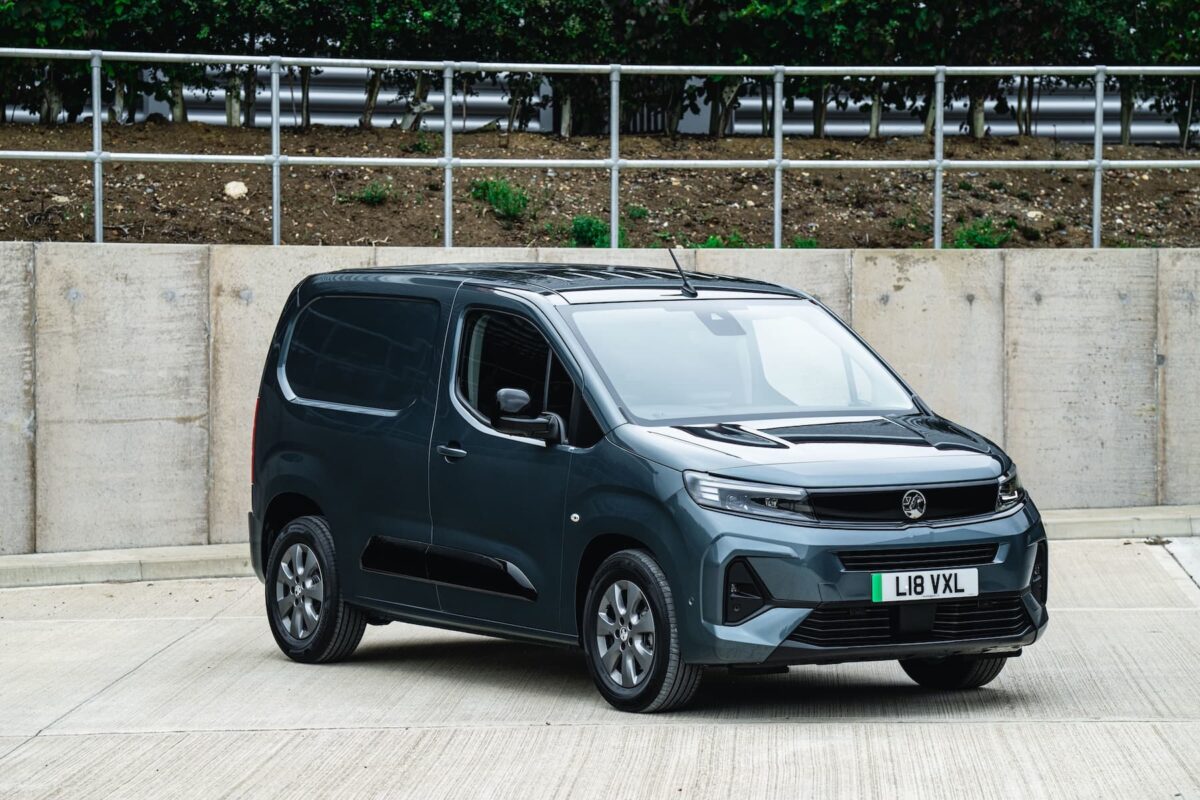
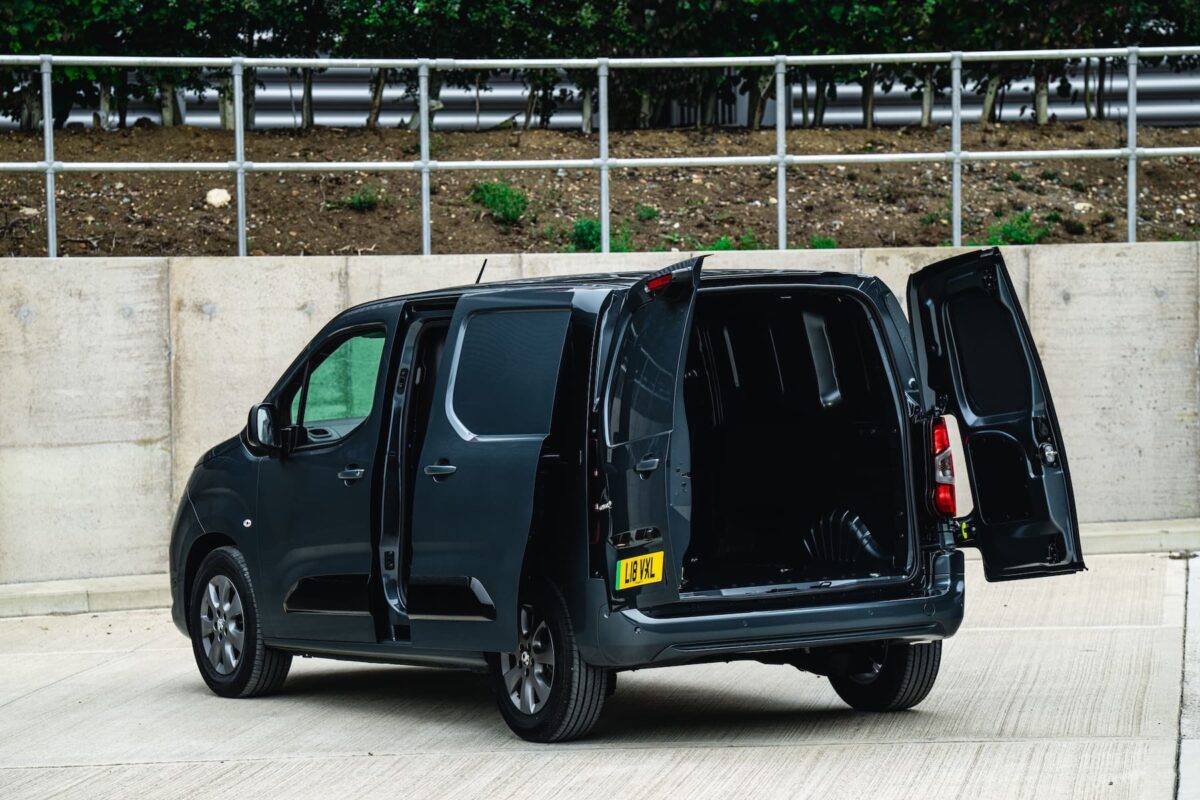
What do you get for your money?
The Combo Electric range is available in two lengths – the shorter is L1 and the longer is L2, also called XL – and two trims, called Prime and Pro. Pricing starts at £27,100 + VAT for the entry-level L1 Prime, running up to £30,350 + VAT for the top-spec L2 XL Pro. THere’s also a crew van version of the L2 XL Prime model
All models get the same 100kW (136hp) electric motor and 52kWh battery, which provides that official battery range of 180-220 miles on the UK/EU lab test.
In terms of kit, the Combo (and other Stellantis) models are a bit more basic than rivals from Nissan, Renault and Mercedes – but that’s reflected in the price, which tends to be at least a couple of thousands pounds cheaper than those brands.
Prime specification gives everything you’d expect from a base model van, although a right-hand-side sliding door adds an extra £275. Rear parking sensors are standard, but you don’t get a central screen for Apple CarPlay/Android Auto navigation and infotainment – instead, you get a dock for mounting your mobile phone that connects via Bluetooth to the speaker system. Unpainted grey bumpers and steel wheels will probably suit fleets who expect their vans to get scuffed up in day-to-day operations.
Pro adds in a lot of extra kit as standard for an extra £2.3K, which makes it much more appealing and still undercuts rivals on price. The dashboard features a proper widescreen central display, which can run either in-built navigation or Apple/Android options. You also get what Vauxhall calls the ‘FlexCargo Pack’ (other Stellantis vans have similar packs), which adds a load-through bulkhead opening for long loads, a folding centre seat that turns into a useful table surface, and an electronic parking brake to free up more cabin space. The bumpers and other body trimmings are painted, the wheels come with plastic covers and there are several additional accident-avoidance safety systems.
Pricing and specifications on any vehicle are subject to change at any time, so check the spec sheet before purchasing. If you’re looking at a used van, check that everything mentioned in the ad is actually on the vehicle – plenty of sellers will rely on generic model information without physically checking the vehicle for its exact specification.
What can you get in it?
The L1 Stellantis models offer 3.3m3 of load volume (about the same as the Renault/Nissan/Mercedes), while the L2 versions extend that to 3.9m3 (about 0.4m3 short of the Renault/Nissan/Mercedes). Maximum payload of the L1 Pro version we drove is 759kg, although the lower-spec Prime version boosts that to 781kg. Those figures are significantly better than the Renault/Nissan/Mercedes trio, which are all around 600-ish kg depending on specification.
L2 models see a reduction in maximum payload to 691kg-709kg for XL Pro and XL Prime, respectively, while the XL Prime Crew Van has a maximum payload of 642kg.
The electric versions of the Vauxhall and Stellantis vans generally lose around 200kg of payload compared to the equivalent diesel versions, but that’s actually better than the Renault/Nissan/Mercedes small vans, which tend to lose about 250kg on a like-for-like basis.
Maximum load length is 1.8m for the L1 models, and 2.2m for the L2 versions. Internal width is just over 1.6m (1.2m between the wheel arches), while height is just over 1.2m. The means you can fit two Euro pallets in the back of the L1, although you’ve have to load them from the rear rather than the side. The load-through hole in the bulkhead that comes with the FlexCargo pack adds an extra 1.2m of length, but only for very narrow loads – like a ladder or pole.
Any version of the Vauxhall Combo Electric can be driven on a regular driving licence.
What’s the Vauxhall Combo Electric like inside?
The cabin is reasonably comfortable, with decent views to both the front and the sides. As with any delivery van, over-the shoulder blind spot views are non-existent, as is rearward visibility. The Pro model gets a digital rear-view camera instead of a traditional mirror, which is helpful. It can take some getting used to, but tends to work better than a traditional mirror in low light situations.
The central ten-inch widescreen touchscreen is decent. Although it’s not the most responsive system we’ve ever seen, it all works well enough. Assuming you want to use your phone for music and navigation, it has wireless connectivity for both Apple CarPlay and Android Auto.
Storage space through the cabin is good, with various slots, shelves and cubby holes everywhere. The full-width overhead tray is useful, and probably a good place to keep your charging cables since the Combo doesn’t have a frunk (front trunk storage space under the bonnet).
The load space is tall and square with good lashing points for securing your loads. We’d prefer to see sliding doors on both sides, although you can spec this for an additional £275. Incidentally, the XL versions do get this as standard. The rear barn doors swing to a full 180 degrees and seem to hold their position well when open.
Some of the buttons can be a bit hard to find in the dark, but you’d get used to it eventually. The steering wheel is comfortable to hold and has plenty of buttons for controlling various functions.
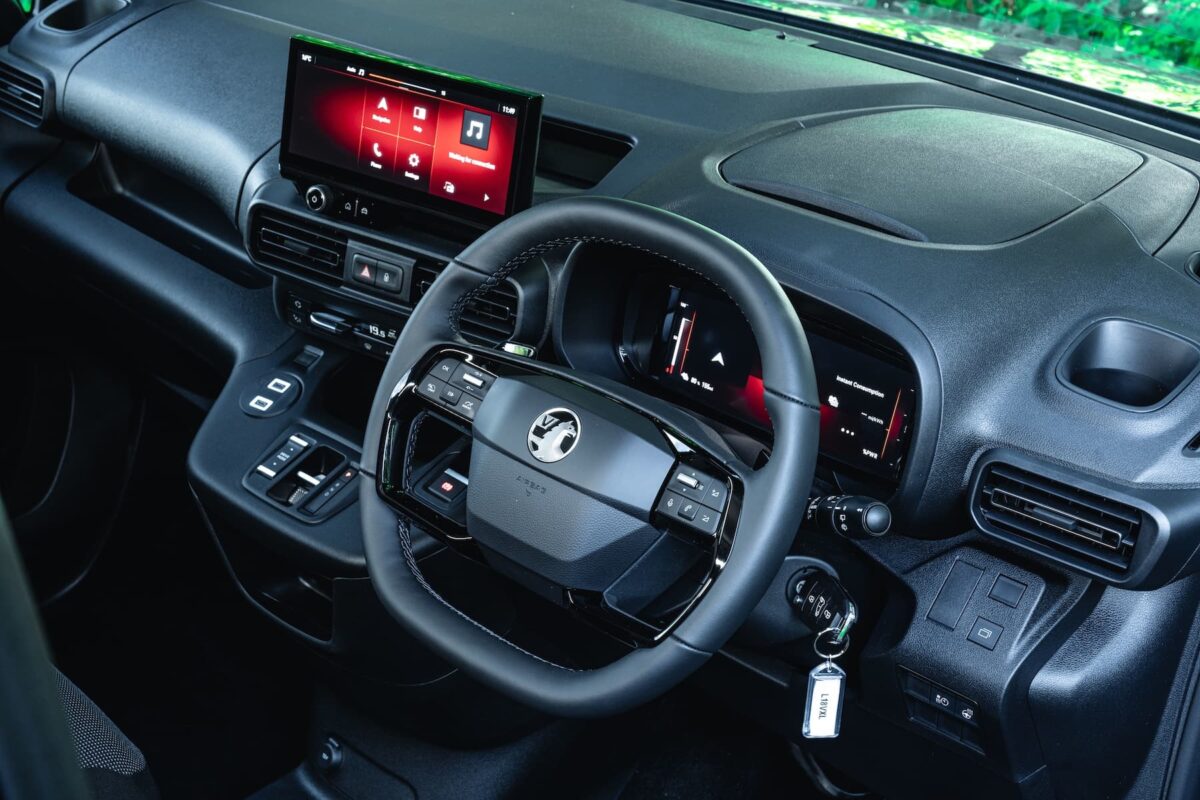

What’s under the bonnet?
The Vauxhall Combo Electric is powered by a single electric motor, which produces 100kW (136hp) and drives through the front wheels. Like all EVs, it has a single-speed transmission so there’s no manual option. Torque is decent at 270Nm, so it will still perform well while fully laden and, being an EV, the performance is available immediately rather than having to build up as the engine revs like a petrol or diesel van.
The motor is powered by a 52kWh battery, which offers a claimed range of up to about 180-200 miles according to UK/EU government lab tests, depending on specification. However, this will reduce in real-world driving, as well as when the vehicle is loaded up rather than empty. Range is also affected by cold weather, although we didn’t find it to be as much as we were expecting.
We tested the Combo Electric in the middle of winter during a very cold week in December and the dashboard display suggested a maximum range of 160 miles (with an empty load bay). This appeared to be fairly accurate, although we didn’t run the battery all the way down to check it thoroughly as we charged up regularly when available. For comparison, the Nissan Townstar we drove last winter had a range that dropped from 180 miles to not much more than 100 miles in freezing temperatures.
What’s the Vauxhall Combo Electric like to drive?
The Vauxhall Combo Electric (and any of its Stellantis siblings) is mostly great for urban stop-start driving. Like any EV, it offers quiet, smooth and clean operation compared to a diesel van, which is pleasant for drivers as well as for everyone else around.
The Combo feels relatively car-like thanks to a fairly low driving position and conventional dashboard layout – most larger vans have a driving position more like a bus or truck. Much of the switchgear is also shared with other Stellantis passenger car models.
It’s smooth and quiet to drive, with immediate response to throttle input. The official 0-60mph time looks unimpressive at about 11 seconds, but that’s somewhat misleading. Electric models tend to be highly responsive in 0-30mph urban driving, but then struggle to maintain that rate of acceleration up to motorway speeds. So in the real world, it’s perfectly capable of keeping up the usual cut and thrust of urban driving. In fact, because it’s so silent and there are no gears shifting up and down, it’s easy to lose track of your speed and creep over the limit.
As with all new vehicles, the EU-mandated speed warning beeps and bongs are annoying, but unfortunately they’re now fitted to pretty much every new vehicle thanks to the latest EU diktats. You can disable them all from the central touchscreen fairly easily, but you have to do it every time you start the van. Every. Single. Time. And that gets very annoying in a multi-drop environment, so most drivers will simply end up ignoring the constant cacophony of warning sounds or turning up the radio to drown them out, which rather defeats the purpose of having them at all.
The van will beep at you every time the speed limit changes and every time you creep even 1mph over the limit, which is especially annoying as the van’s camera system often missed speed limit signs over the course of our week in the Combo, so the van would be beeping and flashing angrily at me for doing 49 in what it thought was a 30 zone when it was actually a 50 zone. It’s not really Vauxhall’s fault (although the camera and software could presumably be a lot better), but these systems are simply not fit for purpose.
Charging the Vauxhall Combo Electric
As standard, the Combo Electric comes with the usual Type 2-to-Type 2 cable for connecting to a wallbox or slow charger. It’s also six metres long, which is more generous than most standard EV cables. That means that, although the charging point is on the rear of the left-hand side of the van, you can probably park in most spaces either forwards or backwards and still be able to connect the charger to the vehicle.
You don’t get a Type 2-to-Type 3 cable for connecting the van to a standard three-point plug, although you can buy one from your friendly Vauxhall dealer.
As standard, the Combo Electric comes with a 7kW on-board charger for charging at a home or workplace wallbox, which gives a full charge (0-100%) time of 7hrs30mins. You can upgrade this to 11kW if you have access to three-phase electricity, which will bring the full charge time down to five hours.
If you’re out and about, the Combo can fast charge at up to 100kW, which is better than the Renault/Nissan/Mercedes van but slower than most electric passenger cars these days. It will give you a charge from 0-80% of about 30 minutes – beyond 80%, charging on all EVs will slow down to protect the battery, so all manufacturers will quote to a maximum of 80%.
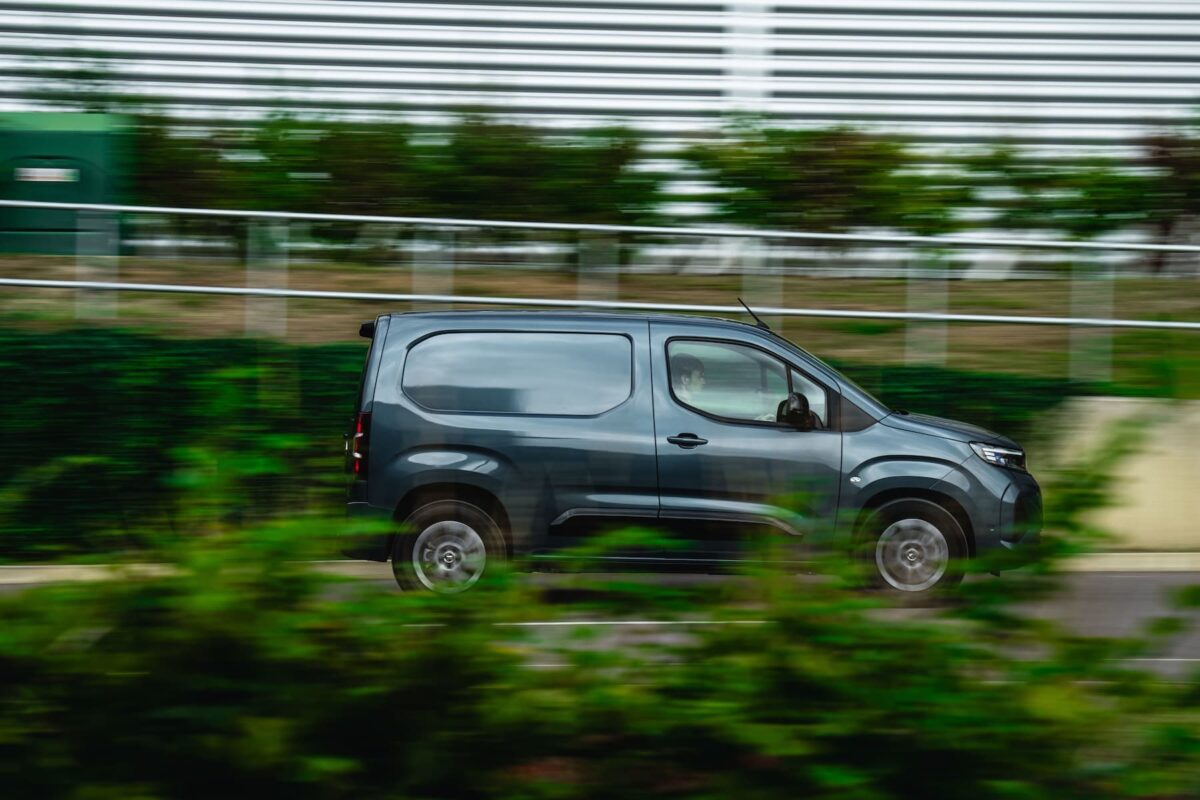
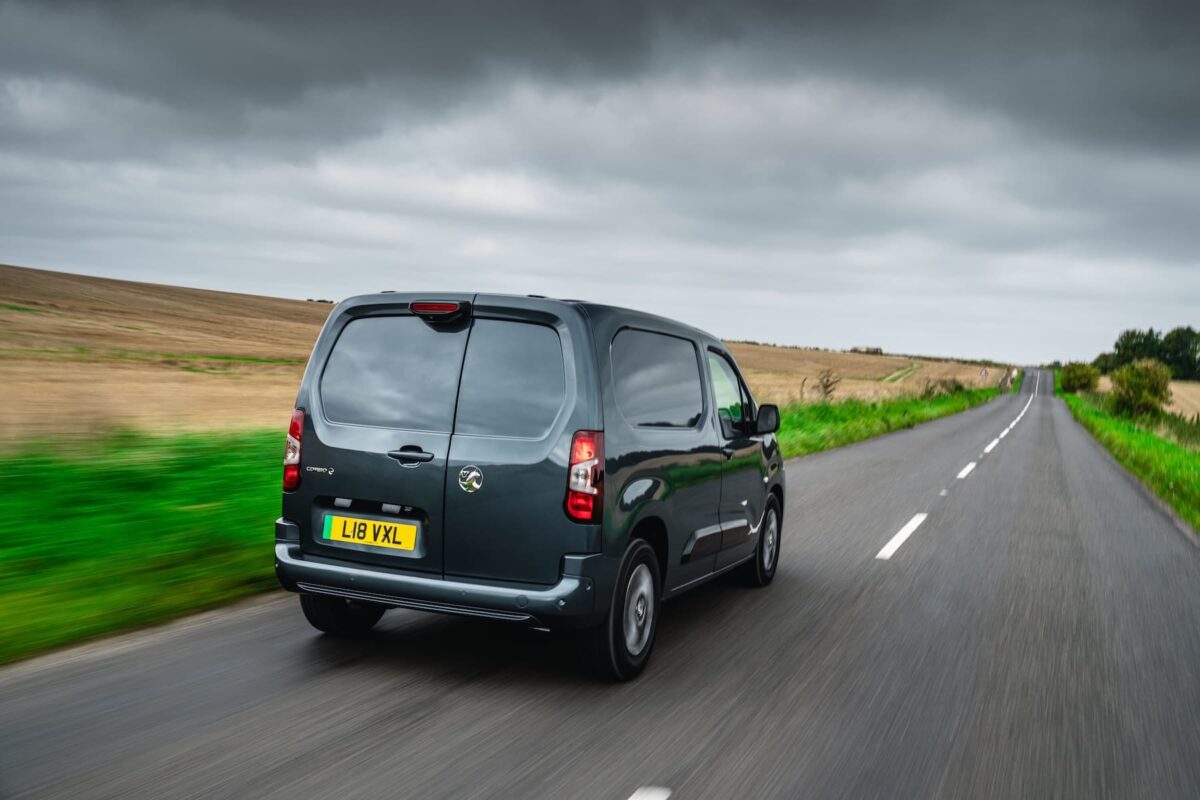
Verdict
Electric vans are slowing growing in acceptance and popularity, although they’re still massively outsold by diesels at the moment. However, in the small van segment – and for lower-mileage daily uses – they can be perfectly viable alternatives to diesel. Royal Mail, for example, has a large and growing fleet of Peugeot e-Partners, which is the sister van to the Vauxhall Combo Electric.
The Combo Electric is also a very nice little van to drive. It’s smoother and quieter than the diesel equivalent, and if you can charge it on-site or at home overnight, you’ll also benefit from substantially lower running costs.
The higher-spec Pro model is probably a better bet than the base-spec Prime model given the amount of kit you get for the extra cash.
Making the switch from a petrol or diesel van to an electric version is a big consideration for any business. There will be a learning curve and you’ll have to think differently about how you manage your vehicle to ensure it meets your business needs. But there’s no doubt that electric vans are becoming a big thing for urban and last-mile deliveries. If you’re ready to make that jump, the Vauxhall Combo Electric is an excellent choice. It also has the significant benefit of being built here in Britain.
Similar vans
Citroën ë-Berlingo | Fiat E-Doblò | Mercedes-Benz eCitan | Nissan Townstar EV | Peugeot e-Partner | Renault Kangoo Electric | Toyota Proace City Electric
The small electric van market is growing rapidly, with seven rivals to the Vauxhall Combo Electric listed above. In reality, however, these vehicles can be divided into two. The Vauxhall is essentially the same van as the Citroën, Fiat, Peugeot and Toyota, built by Stellantis (all apart from the Toyota are built right here in the UK) but wearing five different badges. The Renault is basically the same vehicle as the Nissan, while the Mercedes is also closely related but with a few more differences.
As yet, Volkswagen and Ford don’t have models in this space. However, they’re working jointly on van models, so we’re likely to see electric versions of the Volkswagen Caddy and Ford Transit Connect eventually.
Key specifications
Model tested: Vauxhall Combo L1 Pro
Price: £29,400 + VAT (includes £2,500 plug-in van grant)
Engine: single electric motor, front-wheel drive
Gearbox: Single-speed automatic
Power: 100 kW / 136 hp
Torque: 270 Nm
Max. payload: 759 kg
Max. load volume: 3.3 m3
Electric range: 180-220 miles (UK/EU lab test)
CO2 emissions: 0 g/km
Buy a Vauxhall Combo Electric
If you’re looking to buy a new or used Vauxhall Combo, The Van Expert’s partners can help you find the right vehicle.
Find your next used van with Motors. Find out more
Find your next new or used van with Auto Trader. Find out more
Lease a Vauxhall Combo Electric
If you’re looking to lease a new Vauxhall Combo, The Van Expert’s partners can help you find a competitive deal.
Contract hire deals from Vanparison Leasing. Find out more
Contract hire deals from Leasing.com. Find out more






You must be logged in to post a comment.